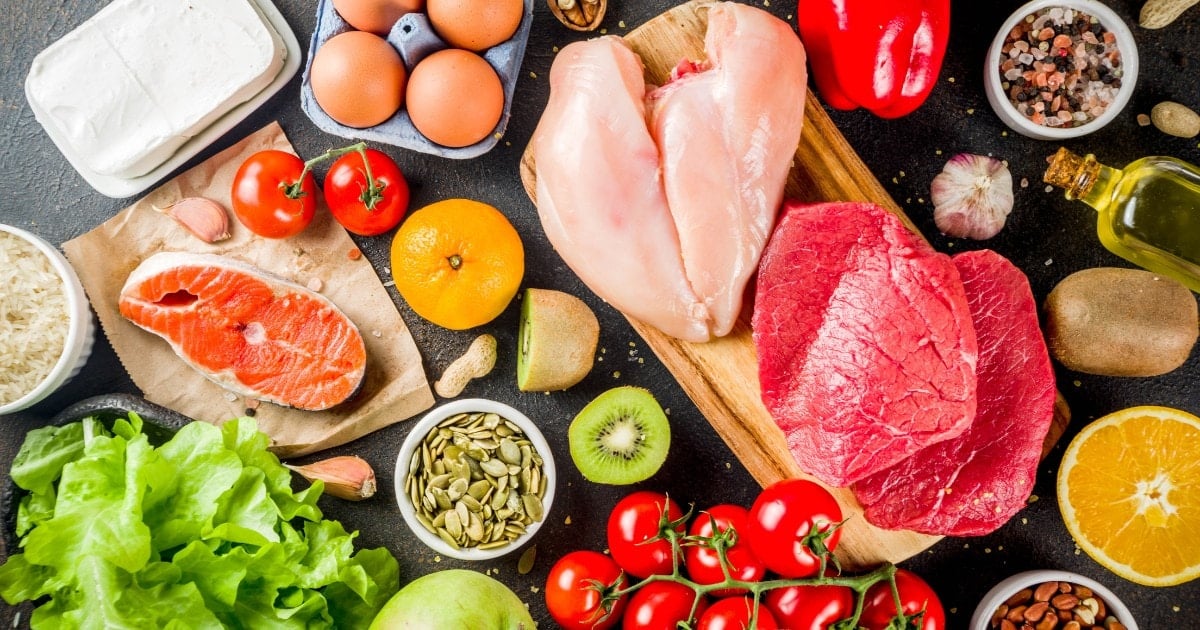Diet is fundamental to managing diabetes effectively, regardless of the type. Successful management involves careful coordination of medications, physical activity, and diet. Establishing healthy habits from diagnosis is key to maintaining a high quality of life.
However, not everyone starts their diabetes journey with a clear understanding of nutritional principles. Many, especially children when diagnosed, lack knowledge about what constitutes a balanced diet for diabetes, or even basic concepts like carbohydrates.
We spoke with Rachel McCandless from Pittsburgh, Pennsylvania, who has lived with type 1 diabetes for 18 years. She shared insights on how she has used dietary choices to improve her diabetes management.

Table of Contents
- Can you share a bit about your journey with diabetes before you decided to focus on dietary changes?
- What was your lifestyle like at the time of diagnosis?
- What motivated you to make dietary changes to manage your diabetes?
- What were some of the biggest challenges you faced when adjusting your diet?
- Could you describe the specific dietary changes you implemented?
- How did you educate yourself about what foods to eat and what to avoid?
- Were there any resources or professionals (like a dietitian or nutritionist) that helped?
- How have the changes impacted your diabetes management, such as blood sugar levels, HbA1c, etc.?
- How do you maintain these dietary changes in your daily life?
- How do you handle dining out or social situations involving food?
- Is there anything you wish you had known at the beginning of your dietary change journey?
- Are there any adjustments or changes you plan to make to your diet going forward?
- How do you see your diet evolving in the future?
Can you share a bit about your journey with diabetes before you decided to focus on dietary changes?
McCandless was diagnosed with type 1 diabetes when she was nine, so she says she didn’t know anything about diet or nutrition.
She explains,
“I had the pretty standard diagnosis story. I was really, really sick in the third grade, and was rushed to the hospital around Thanksgiving when I received a type 1 diabetes diagnosis. We didn’t have any diabetes in the family, so my parents were really scared.”
She continues,
“This was 18 years ago, so we didn’t have all the gadgets like continuous glucose monitors or insulin pumps. I was taking many injections per day and was told to pretty much stick to a certain number of carbohydrates for each meal. I was always going low or high, and besides the number of carbohydrates I would eat, I didn’t focus on balanced nutrition at all.”
McCandless says that she remembers her mom counting out a certain number of Ritz crackers for her daily afternoon snack. She says,
“It was five round crackers for 10 carbs, plus I always had them with cheese.”
What was your lifestyle like at the time of diagnosis?
McCandless says that she was a pretty typical child.
“I didn’t think about lifestyle at all, but my brothers and I always spent a lot of time outside when I was a kid. We were always riding bikes, playing ‘man-hunt,’ running around — the idyllic childhood before phones and constant screens! I also didn’t pay any attention to what I was eating, but like any kid, I really enjoyed ice cream and other sweets.”
She says that she was a healthy kid and was really active.
“I never stuffed myself. I was always more concerned about just playing around with friends. However, getting a T1D diagnosis was such a bummer, because for the first time in my life, I had to pay attention to really mundane, boring things, like insulin, medication, and what I was eating. I was pretty sad about that.”
What motivated you to make dietary changes to manage your diabetes?
McCandless shares,
“I pretty much had a high A1c for the first few years of my diabetes, mostly because I was apathetic about it. However, when I started going to diabetes camp as a teenager, we learned more about nutrition in a fun way. The counselors and dietitians there talked about balancing what we eat with how we move, and that struck me.”
She continues,
“We had a big salad bar at camp, and I remember everyone could take as many veggies as they wanted because they were lower carbohydrate. I started learning to fill my plate with more vegetables and proteins, and when I did that, my blood sugars were a bit easier to manage afterward.”
What were some of the biggest challenges you faced when adjusting your diet?
McCandless says that there is no such thing as perfection.
“Being a teenager with diabetes was HARD. I highly do not recommend it. There is a lot of peer pressure, especially when you’re out with your friends and everyone wants to grab french fries and milkshakes and just relax. It’s hard being the only one trying to count carbohydrates, or even sit there and order something else, like a salad. Lots of people never understood.”
She continues,
“As I’ve gotten older, however, people do understand, and I think more and more people do care about the types of foods they’re eating and they’re trying to eat healthy. Diabetes gave me that — a complete understanding of diet and nutrition years before my peers.”
Could you describe the specific dietary changes you implemented?
McCandless doesn’t follow a rigid diet and prefers to stay flexible.
However, she says,
“I do try to fill my plate with vegetables, fruits, and proteins first, and then if there’s room, I’ll add grains and foods with higher carbohydrates.”
She tries not to impose too many restrictions on herself, but on days when her blood sugar is less stable, she limits sweets and increases her water intake. However, she adds,
“I ALWAYS have cake on my birthday and my diaversary.”
How did you educate yourself about what foods to eat and what to avoid?
McCandless adopts a very open approach, joking,
“I try not to avoid anything unless it’s poison!”
She found that taking a nutrition class in college provided some foundational knowledge, but interacting with other people with diabetes has been the most beneficial. Learning about the strategies and tips that have worked for others has been invaluable.
She emphasizes the importance of maintaining an open mind, suggesting,
“People should walk through life ready to learn and adapt.”
Were there any resources or professionals (like a dietitian or nutritionist) that helped?
McCandless reflects on her initial experiences with mixed feelings, noting,
“Honestly, my dietitian at diagnosis was not much help. They did not teach me anything about balancing carbohydrates to protein, fat, or fiber, but just talked about aiming for a certain number of carbohydrates per meal.”
She strongly advocates for more comprehensive support.
“I really think that people with T1D should be able to have regular visits with a nutritionist or dietitian, especially young women and girls with T1D, who are more susceptible to disordered eating.”
McCandless says that lots of people fall through the cracks and can develop unhealthy eating habits that can be dangerous.
“Checking in with a professional to make sure you’re taking care of your body is crucial with T1D.”
How have the changes impacted your diabetes management, such as blood sugar levels, HbA1c, etc.?
McCandless says there have been significant improvements in her diabetes management:
“My A1c was always extremely high during my childhood, often in double digits. However, for the past ten years, I’ve managed to keep it under 7 percent, which is a considerable achievement for me.”
In addition to dietary changes, she has integrated regular physical activity into her routine, which has further enhanced her health. She enjoys cross-country skiing and tennis, and integrating these pursuits into her life has not only helped manage her diabetes but also kept her weight in a healthy range.
Read more about reducing A1c levels in How to Lower Your A1c: The Complete Guide and How to Lower A1c Naturally.
How do you maintain these dietary changes in your daily life?
“Working full-time and having diabetes is no joke,”
McCandless admits.
“It can be hard. I try to batch cook beans and vegetables on the weekends to create quick but healthy dinners during the workweek.”
McCandless also says that she enjoys fruit smoothies with protein supplements for snacks and she tries to exercise before work a few mornings a week.
How do you handle dining out or social situations involving food?
McCandless offers practical advice for navigating dining and social events:
“Always pick the restaurant and do your research before you go! You can often look up menus online so you’re not blindsided when you get there, and you know what you can order and what will work for you.”
She also emphasizes the importance of preparing for social occasions, noting that she never goes to a social occasion hungry.
“I’ll have a high-fat, high-protein snack before leaving my apartment, so when I get to a gathering or party, I’m not famished. I’m less likely to binge on unhealthy foods that way.”
She encourages others with diabetes to find what works best for them personally, reminding them,
“There are no right or wrong answers! Diabetes is a marathon, not a sprint.”
Is there anything you wish you had known at the beginning of your dietary change journey?
McCandless doesn’t have regrets about her early years with T1D, recognizing the difficulties but also the importance of self-compassion. She says,
“It’s just … hard. I’m glad that I wasn’t super hard on myself as a kid. I always enjoyed ice cream, popcorn, candy, and cakes. My blood sugars did suffer a bit, but I’m glad that I was able to enjoy my childhood. I learned about nutrition over time; it was an evolution. I think people should educate themselves but give themselves time and grace, too.”
Are there any adjustments or changes you plan to make to your diet going forward?
She shares her thoughts on reducing alcohol intake:
“I don’t drink much alcohol, but I’ve been dipping into the sober-curious community a lot more recently. I think giving up alcohol, or at least experimenting with a break, is in my future.”
How do you see your diet evolving in the future?
McCandless says that she wants to start a vegetable garden, especially once she and her fiancé buy their first home. She says,
“Having a yard and growing my own herbs and vegetables just sounds dreamy! And it’s all low-carb. Everyone wins!”
Read more about using diet to manage your diabetes in our 7-Day Diabetes Meal Plan (With Printable Grocery List). Did you find this article helpful? Click Yes or No below to let us know!



